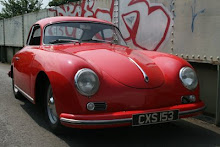When restoring classic vehicle bodywork, it is important to avoid any contact between bare metal and new paint.
Today, with modern materials and processes, car manufacturers can offer many years warranty against rust appearing By contrast, the sheet metal of older vehicles was less refined when new and will have been around the block many times, therefore it will suffer from any moisture. So when it comes to refinishing a classic car, sustainable corrosion protection plays an important role.
It is important to counter the risk of corrosion at the time of preparing the substrate and once surface tension of the steel is broken, the clock is ticking. So having meticulously prepared and cleaned exposed metal, professional restorers quickly move to applying a protective coat which remains until it’s time to prep the car for painting.
Next step is removing the protective coat, re-attending to the metal and applying a thin insulation layer between the bare metal and the primer coat. Without this, the next coat of paint acts like a dry sponge that absorbs moisture, passes it on to the metal and holds it there.
So a two-coat build-up consisting of an acid primer and a 2K filler primer is used.
Coat one - The acid primer has a corrosion-inhibiting effect it also provides excellent etch adhesion to the metallic substrate on the one hand and to the upper coats on the other hand.
Coat two - The 2K filler isolates any defects and pores and helps to even out the surface. It becomes the perfected base for the topcoat.
Modern coating technology alone cannot guarantee the long life of a prestige or classic car. It is important to carry out all steps of the refinishing process with utmost care. This also means that the application of acid primer must be repeated as soon any body part is sanded back through to bare metal – even if this happens only in tiny areas.















No comments:
Post a Comment